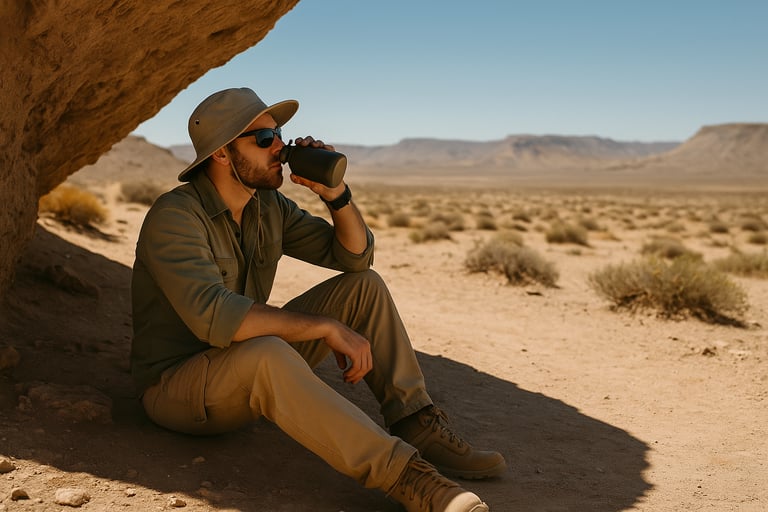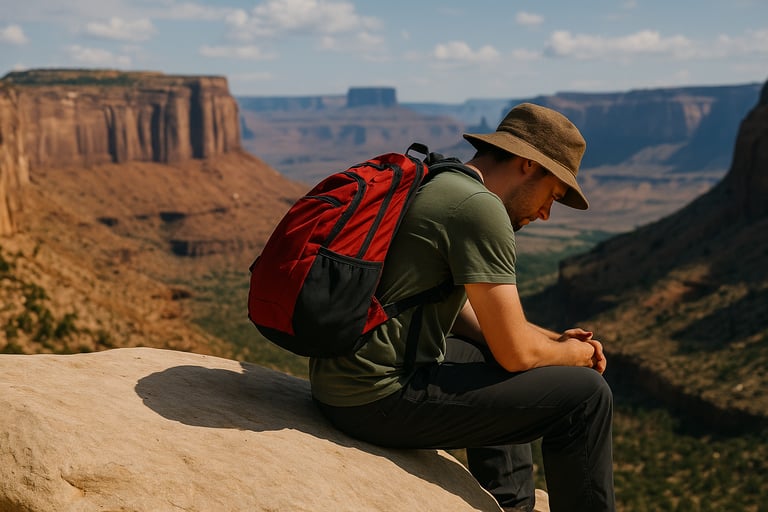How to Prevent Heatstroke & Dehydration in Hot Climates
Learn how to avoid heatstroke and dehydration while hiking or camping in extreme heat. Discover top hydration tips, signs of overheating, and essential heat safety strategies for wilderness survival.


How to Prevent Heatstroke & Dehydration in Hot Climates
Understanding Heatstroke and Dehydration in the Wilderness
Spending time outdoors in hot climates can be deeply rewarding, but it also comes with serious risks, especially when temperatures soar. Two of the biggest dangers in this environment are heatstroke and dehydration. Both can develop faster than you expect and quickly become life-threatening without the right precautions. Whether you’re hiking a desert trail or surviving in a tropical heatwave, knowing how to stay cool and hydrated is essential for any outdoor enthusiast.
If you're heading into desert terrain, these smart strategies for surviving the desert can help you manage extreme heat and terrain together.
Recognizing the Signs of Heat Exhaustion and Heatstroke
Heat-related illnesses tend to develop in stages. It often starts with heat exhaustion, where symptoms include excessive sweating, fatigue, dizziness, headache, nausea, and rapid heartbeat. If left untreated, it can progress to heatstroke — a medical emergency where the body’s core temperature rises above 104°F. Signs of heatstroke include confusion, dry or flushed skin, slurred speech, and even unconsciousness. Recognizing the early warning signs gives you a critical window to act before things escalate.
Understanding basic wilderness first aid principles is essential in managing medical emergencies like heatstroke in remote environments.
How to Stay Hydrated in Extreme Heat
Hydration isn’t just about drinking water, it’s about doing it consistently. In hot weather, your body loses water quickly through sweat, even when you’re not physically exerting yourself. It’s best to drink small amounts frequently instead of gulping large amounts at once. Electrolyte balance is equally important. If you’re sweating heavily, water alone may not be enough. Add oral rehydration salts or electrolyte tablets to your water to replenish lost sodium and potassium. Keep in mind that thirst is a late indicator, if you feel thirsty, you’re already dehydrated.
You can learn more about hydration safety in our complete guide to wilderness water purification and hydration.
Choosing the Right Clothing and Gear to Stay Cool
The clothes you wear can make a huge difference in how your body regulates heat. Light colored, loose-fitting clothing made of breathable materials like cotton or moisture-wicking synthetic fabrics can help your body stay cool. A wide-brimmed hat offers vital protection for your face and neck, and sunglasses can reduce eye strain from sun glare. Whenever possible, carry a reflective emergency blanket or tarp to create temporary shade when natural shelter isn’t available. Your gear should also include extra water storage - collapsible bottles or hydration bladders are great space-saving options.
When and Where to Travel in Hot Climates
Timing your movement is a smart survival tactic. Avoid peak heat hours — typically between 11 a.m. and 3 p.m. Instead, plan your travel during the early morning or late afternoon. Rest in shaded areas or near water sources during the hottest part of the day. If you must hike during warm hours, take frequent breaks and monitor your energy levels. It’s also smart to understand the terrain — canyons, ravines, and low-lying areas can trap heat, while higher elevations or tree-covered trails may offer cooler refuge.
Emergency Heatstroke Response in the Field
If someone shows signs of heatstroke, act fast. Move them to a shaded area immediately and begin cooling their body by soaking clothing, applying wet cloths, or using a fan if available. If you have cool fluids, pour it over their back and neck. Loosen tight clothing and elevate their legs if they’re dizzy or faint. Offer sips of water if they’re conscious, but never force fluids. Seek emergency help if symptoms worsen or they lose consciousness. Having basic wilderness first aid knowledge can make all the difference in these situations.
Closing Thoughts on Hot Weather Survival
Being outside in hot, dry, or humid climates doesn’t have to be dangerous — if you’re prepared. Understanding your environment, staying hydrated, pacing your activity, and watching for signs of overheating and treating them at the earliest possible moment, are the foundations of safe wilderness travel in extreme heat. Preparation and awareness can turn a potentially hazardous situation into a confident and successful adventure.




© 2025. All rights reserved About | Privacy Policy | Terms and Conditions | Affiliate Disclosure | Disclaimer


